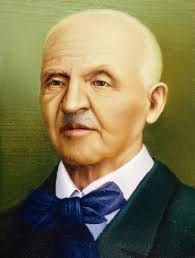The Monumental Journey of Bruckner’s Symphony No. 8 in C Minor
Anton Bruckner’s Symphony No. 8 in C Minor stands as one of the most monumental and emotionally powerful works in the symphonic repertoire. It is the last symphony Bruckner completed, and also the largest in scale, both in terms of duration and orchestration. Deeply spiritual, richly orchestrated, and profoundly dramatic, the Eighth Symphony is a towering achievement in late Romantic music.
A Vision of the Sublime
Bruckner began composing the Eighth Symphony in 1884, shortly after completing his Seventh Symphony, which had finally brought him widespread acclaim. Encouraged by this success, Bruckner aimed to create an even more ambitious work, one that would encapsulate his spiritual vision and his unique sense of musical architecture.
The initial version of the symphony was completed in 1887, and Bruckner confidently sent it to the conductor Hermann Levi, who had championed his Seventh Symphony. However, Levi reacted with confusion and hesitation. Though he admired Bruckner, he felt the new symphony was incoherent and unperformable in its original form.
Revisions and Perseverance
Crushed but determined, Bruckner began revising the symphony in 1889, working meticulously to clarify the structure, refine the orchestration, and improve the flow between movements. This second version, completed in 1890, is the one most frequently performed today. In this revision, Bruckner made numerous changes: he shortened the first movement, reworked the Scherzo and Finale, and subtly transformed the orchestral textures to achieve greater clarity and impact.
This revised version was eventually published in 1892 and premiered in 1892 in Vienna under the baton of Hans Richter. The premiere was a significant success, marking a turning point in Bruckner’s reception. The audience responded with enthusiasm, and critics began to understand the profound originality of Bruckner’s symphonic voice.
Structure and Meaning
The Eighth Symphony is vast, typically lasting between 75 to 90 minutes, and is scored for an enormous orchestra, including triple woodwinds, eight horns, Wagner tubas, and a large brass section. It is divided into four movements:
- Allegro moderato – A dramatic and majestic opening movement, building from brooding tension to moments of blazing affirmation.
- Scherzo: Allegro moderato – A powerful, rhythmic dance with a mysterious Trio section that evokes distant, dreamlike imagery.
- Adagio: Feierlich langsam, doch nicht schleppend – One of Bruckner’s most sublime slow movements, filled with spiritual yearning, noble themes, and a transcendent climax.
- Finale: Feierlich, nicht schnell – A complex and triumphant conclusion that weaves together themes from earlier movements, culminating in a radiant apotheosis.
Legacy and Influence
Today, Symphony No. 8 in C Minor is widely regarded as Bruckner’s magnum opus, a symphony that bridges the worlds of Beethoven, Wagner, and Mahler. Its immense scale and emotional depth have inspired generations of composers, conductors, and listeners.
Though Bruckner faced setbacks and self-doubt during its creation, the Eighth Symphony ultimately became a testament to his unshakable faith and artistic conviction. It is a work of staggering beauty and intensity—a journey from darkness to light, from struggle to transcendence.


Comments are closed